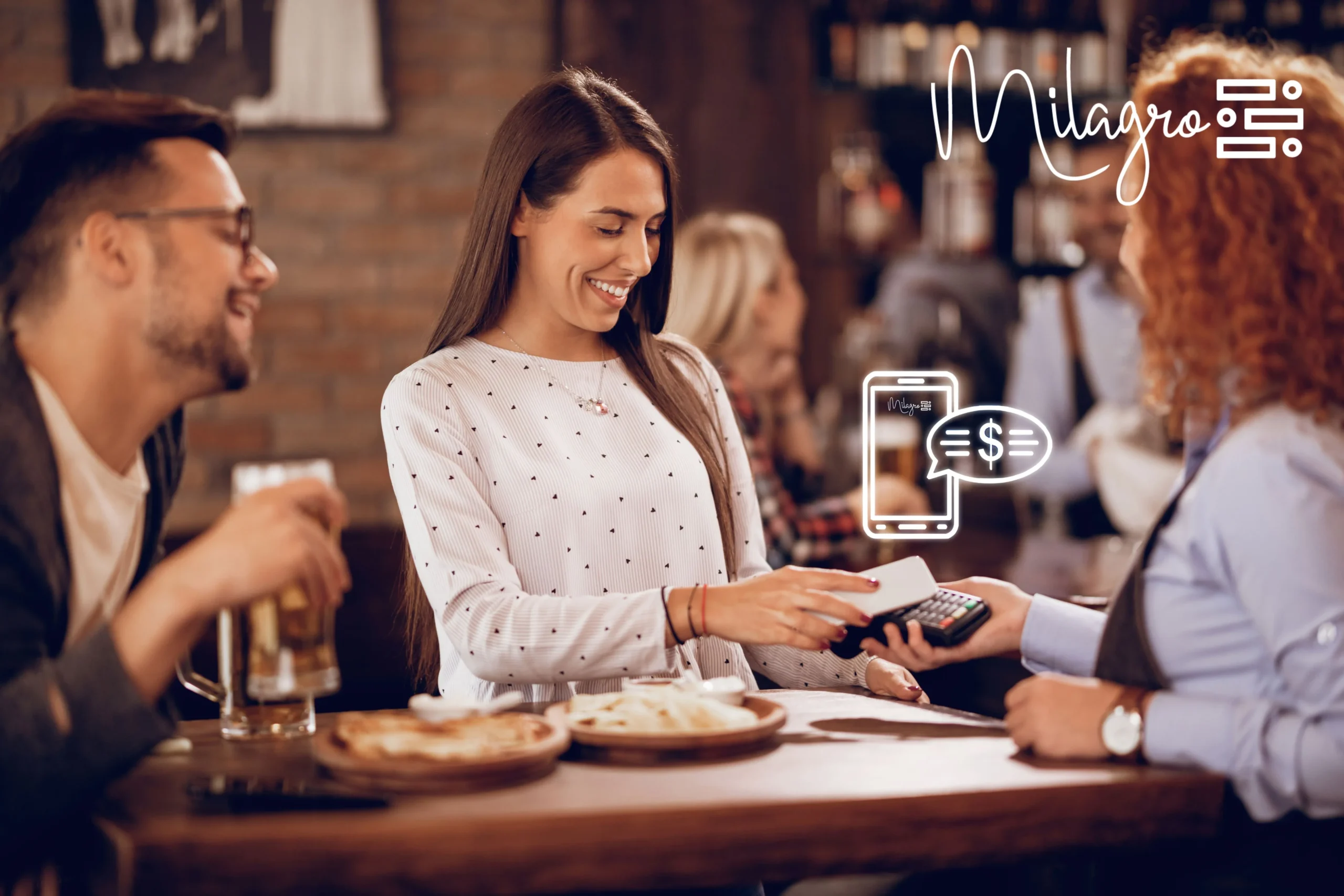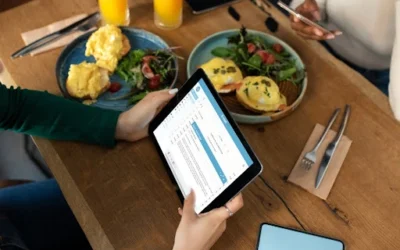Hospitality businesses have always needed to adapt quickly. That’s why they came up with daily specials. But being a flexible restaurant business today isn’t just about making more money. It’s about making your whole business adaptable and always improving.
Restaurants, cafes, and bars that made it through the pandemic didn’t just switch to contactless, takeaway services overnight. They also handled everything from feeding frontline workers to teaching guests how to adapt to the new technology. These restaurant businesses are still dealing with labor shortages across the US, unstable supply chains, and rising costs, with no clear end in sight.
Restaurant businesses will keep using technology to help them thrive. They need to reach more customers and offer their services beyond the dining room, with delivery or pickup to meet the growing demand anytime, anywhere. It’s important that businesses can use the right Point of Sale (POS) tools that automate processes, save time for owners and staff, and provide everything needed to stay competitive.
Guide to Restaurant Pay at the Table Technology
What is Pay at the Table?
Pay-at-the-table technology enables restaurant customers to order items or settle their bills by scanning a QR code with their smartphone or using a handheld point-of-sale device provided by a server.
Tableside payment choices are gaining popularity among various types of restaurants, from fast casual to upscale dining, due to the impact of the COVID-19 pandemic. Before the pandemic, hospitality often involved lengthy conversations with attentive servers and other front-of-house staff who checked on guests regularly. However, was the typical payment process truly enhancing the hospitality experience?
Here’s a typical payment process for customers paying with a credit card:
- You signal the server when you’re ready for the check.
- The server brings the check to your table, and you leave your card.
- The server collects your card and processes the payment at the main POS system (which may take some time, depending on the restaurant’s busyness and the server’s workload).
- The server returns with your receipt and departs.
- You calculate the tip, and the server returns to retrieve the receipt.
Before the pandemic, the concept of pay-at-the-table technology might have seemed impersonal and mechanical, as it reduces some interactions between servers and customers — breaking away from tradition in an industry centered on warmth and friendly exchanges. What truly matters is a server’s ability to assist guests during their meal, recommend menu items, upsell, and ensure everything meets their expectations. Following the traditional payment method won’t enhance a guest’s experience, but impressing them with new, convenient technology might.
With the ongoing pandemic, guests’ expectations have shifted significantly, and the industry is evolving to ensure everyone feels safer. This shift is leading to a new form of hospitality that thrives on embracing new technology. Casual conversations and a prolonged payment process have currently been replaced with quick interactions and even faster payments, along with a focus on safety, cleanliness, and social distancing measures. To provide the sense of safety and efficiency required in this environment, many small business owners have moved away from the traditional card and receipt system.
Even after COVID is a distant memory, guests will appreciate the return of conversations and lasting connections — but they won’t want to give up the convenience of pay-at-the-table processing that they have grown accustomed to this year.
How does pay at the table function with a handheld point of sale?
Rapid and touchless payment choices (such as order and pay at the table technology, or pay at the table POS) are swiftly becoming standard to lessen contact with menus and other frequently touched objects. Handheld-based systems that handle payments, send email receipts to customers, and incorporate loyalty and rewards programs are now the preferred option, even for eateries that have stuck to the traditional paper receipt method for years.
Restaurants can cut down on both time and expenses, boost earnings and gratuities, and decrease waste while offering advantages to customers, making tableside payments even more attractive.
Industry challenges bring new waves of concern
Success in the restaurant industry is relatively easy, with recent years introducing new challenges for restaurateurs.
- Increasing Costs: The costs of running a business and buying ingredients are rising. This could be due to supply chain issues, closures from Covid, inflation, or geopolitical conflicts. All these factors greatly affect businesses and their customers.
- Staff Shortages: Many restaurants are struggling right now as they try to do more work with fewer people. It’s hard to find and keep staff, and this is a problem in many industries.
- Uncertainty: There’s a lot of instability in supply chains, health and dining rules are changing, the weather is unpredictable, and consumer behavior keeps changing. In these conditions, being flexible is still the key to success.
The Cons of Table Side Payment Technology
1. Technology requires upfront investment
If your restaurant is considering a new Point of Sale (POS) system or already has one, you need to plan for the cost. Old cash registers are outdated. To keep up with today’s cashless world, you need card readers. Cloud-based POS systems also provide useful data to help increase your revenue.
Even though the initial costs can be high, using new technology can save money and time in the long run. For example, handheld POS systems can speed up service by reducing the number of times a server needs to go to a central POS system. This lets servers focus on providing great service to more tables, and tables can be served 15-20% faster than without handheld POS systems.
Even though Order & Pay at the Table technology doesn’t use cash, it doesn’t mean you’ll make less money. You could make more.
2. A different customer experience
Customers prefer control over when and where they pay, without feeling rushed. New payment tech like Order & Pay can remove dropped checks but may discourage customers from lingering. Handheld POS systems may make customers feel monitored during payment. Educate customers on new payment methods for better understanding. Research and implement best practices for optimal customer experience with pay-at-the-table technology.
The Advantages of Pay-at-the-Table Technology
1. Customer Security
In the U.S., customers feel more secure with pay-at-the-table systems as they retain control over their credit cards. Handheld POS systems offer secure payment options like Apple Pay and Google Wallet, enhancing security with biometric data or passwords.
2. Faster Table Turnaround
Pay-at-the-table setups reduce trips to the POS terminal, speeding up transactions. This helps customers finish meals quickly, boosts revenue, and improves customer satisfaction by minimizing delays from split checks or multitasking servers.
3. Increased Tips
Restaurants using pay-at-the-table tech often see higher tips. Handheld devices prompt customers for tips before payment, leading to increased tips and overall restaurant productivity.
By offering tip suggestions at the point of sale through most portable devices, customers can easily select tip percentages, leading to higher tips and smoother transactions.
4. Lower Labor Costs
With pay-at-the-table tech, guests have control over their dining experience, reducing the need for staff assistance. This allows servers to focus on customer service, upselling, and menu recommendations, leading to efficient operations with fewer servers.
5. Simple Expense Tracking
Tsbleside payment systems offer easy financial data access for customers and restaurants. Restaurants can integrate with accounting systems, reducing paperwork. Emailed receipts are convenient for customers using expense reporting software.
6. Environmental Benefits
Adopting pay-at-the-table technology reduces paper waste and expenses. Eliminating paper receipts cuts costs on paper and ink, and reduces exposure to harmful substances like BPA. This shift towards digital receipts is more environmentally friendly and cost-effective.
Tableside payments offer various benefits for your business.
Enhanced Employee Satisfaction
Processing payments at the table can help servers stay organized and focused on delivering exceptional customer service. By reducing errors in order processing, minimizing trips to the POS for payments, and speeding up table turnover, servers can potentially earn larger tips. Efficient time management leads to happier employees who are more likely to stay in their roles.
Improved Customer Experience for Increased Loyalty
A positive customer experience is crucial for building a loyal customer base. Tableside ordering and payments reduce errors and streamline the ordering and payment process, providing customers with a quick and efficient service.
Accurate and Swift Orders
Conventional payment methods require servers to make multiple trips to complete a single payment. Tableside payments save time by handling the check and payment in a single transaction. When paired with back-of-house technology, tableside devices enable faster order placement without the complications of paper-based processing.
Reduced Void Instances Due to Out-of-Stock Items
Delays between order placement and ticket processing can lead to inventory discrepancies, necessitating manager voids and causing delays. Tableside POS systems automatically send orders to the Kitchen Display System, allowing employees to see real-time inventory status. This helps in informing customers about sold-out items and prevents disappointment from ordering unavailable dishes.
Introducing Milagro: A Modern Payment Solution for Restaurants
Milagro is a technology that offers innovative smart menu management, ordering, and payment solutions through digital tablets and mobile menus. Enhance your dining experience with Milagro to boost customer satisfaction and drive profitability.
Efficient Bill Settlement
With split and pay options, settle bills in under 10 seconds, enabling faster table turnover and increased customer satisfaction, leading to higher tips.
Seamless Payment Process
Guests can pay their bills in seconds at the side payment feature saving time per table and simplifying the payment process, especially for large groups.
Maintain Traditional Service
While staff don’t need to memorize every order detail, Milagro allows you to maintain your traditional service experience while offering a streamlined payment method, freeing up time for customer engagement.
Accept Various Payment Methods
Collaborating with top payment providers, Milagro enables customers to pay using credit cards, Apple Pay, Google Pay, and other e-wallet options, ensuring convenience for all patrons.
Data Capture
The fast Checkout feature saves guest information and order details upon payment, providing valuable data for customer engagement and loyalty programs.
Unlock Business Benefits
By implementing Milagro, businesses can increase revenue by over 15%, achieve higher table turnover, larger ticket sizes, and increase tips. Additionally, operational costs can be reduced by 30%, minimizing errors, enhancing control, and allowing for easy updates with a single click.
Sounds Good?
Whether you run one restaurant or multi-locations, your business will benefit immensely from tableside payments. Not only that, but your competitors are probably offering tableside payments and all the conveniences it brings to diners.
Don’t take this lying down. Contact Milagro and make the switch today.





